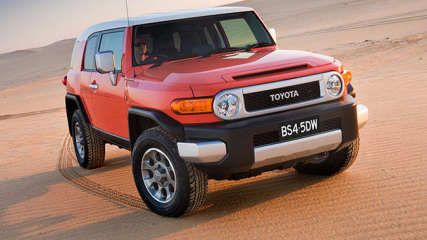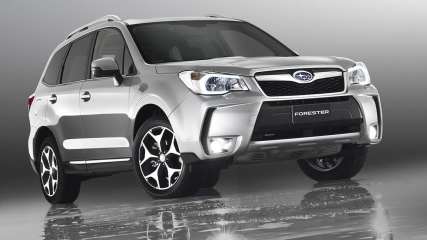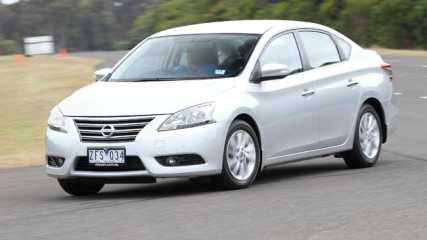Nissan Pulsar ST-L 2013 Review
By Nick Dalton · 14 Mar 2013
It’s the car Nissan buyers have been waiting a long time for after the Japanese maker's failed experiment with the odd French-Japanese Tiida sedan and hatch.Nissan took a huge risk to drop the widely known and respected Pulsar tag for the quirky Tiida. But buyers stayed away in droves with sales last year down to 3059 from a high of 13,756 in 2007. In its hey day the last Pulsar sold about 20,000 a year.However, Nissan is expecting much better from the new Pulsar with sales in its first full month in February of 1275 placing it sixth on the sales chart and ahead of Volkswagen's Golf and the Ford Focus . . . and that's just the sedan, with the bigger selling hatch to come later this year.Interestingly, Westco Nissan sales manager Pete Dodds said half of their sales so far had been previous Pulsar owners, and not Tiida drivers, with the last Pulsar selling here eight years ago. He said Pulsar owners were loyal and patient.VALUEThe ST-L CVT auto is $28,990 drive away and is packed full of gear, including 16-inch alloy wheels with a full size steep spare, a single CD player with MP3 capability, auxiliary input jack, AM/FM radio and USB/iPod connectivity, a 4.3 inch colour display, six speakers, air conditioning, cruise control with steering wheel controls, remote keyless entry, power windows, leather steering wheel with audio controls and a Bluetooth handsfree phone system.It also comes with height adjustable driver's seat and tilt and telescopic adjustable steering column, LED daytime running lights (not automatic), trip computer, stability and traction control, engine immobiliser, Anti-lock Braking System (ABS) with Electronic Brakeforce Distribution (EBD) and Brake Assist (BA), six airbags, front fog lights and a rear spoiler.TECHNOLOGYIt gets a 1.8-litre four-cylinder engine, producing 96 kilowatts and 174 Newton metres of torque. Drive comes through the front wheels and owners have the added addition of a CVT transmission in this particular model.DESIGNFirst impressions of the Pulsar four door are the mini-Maxima looks and a roomy interior and boot.The Pulsar's dashboard is simple and well presented with the speedo and rev counter and other dials refreshingly clear and easy to read.The multi-function display between the dials is frustrating because it does not show more than one type of information at a time, nor the selected cruise control speed and has an old-style digital clock display.A height and reach adjustable steering wheel makes finding a comfortable driving position easy, although the back angle adjuster is a fiddly lever instead of a better rotary knob. All the main switchgear falls naturally to hand and there is a solid feel to the ventilation controls.A nice soft-touch surface atop the dashboard and, while some cabin plastics feel and look a bit cheap, there is an ambience of quality and robustness about the Pulsar's interior. The kevlar-like metallic plastic on the ST-L's centre console and door trims is a pleasant contrast to the smatterings of black.As well as a bin beneath the front armrest there are a couple of cup holders and an ashtray-like covered recess. The glove box has a deep storage area.There's stacks of room in the rear with lots of knee room, a large central arm-rest, a pair of air vents and a quarter-light window improving the outside view.The enormous 510-litre boot is class-leading, better than some bigger cars such as the Holden Commodore but there's no folding rear seats for larger objects and a lump in the floor by the full-size spare wheel. Old-style goose-neck hinges will impinge on a tightly-packed boot.DRIVINGThe Pulsar is easy to drive and park. I'm not a fan of CVT automatics but this new generation is much better and only becomes annoying when you give it full force acceleration. Otherwise in moderate driving it is quiet and unobtrusive. There's a lack of manual changes with just a low ratio and the Sports mode giving the driver a say on proceedings.It feels reasonably nippy round town and solid on the open road. The Pulsar is built for comfort, not speed, and is a bit soft when pitched into corners, gets a bit floaty and ultimately runs wide or understeers. There was no point pushing its limits on the Rex and Kuranda mountain range roads.It is safe and competent enough, with well-weighted, direct and accurate steering, but does not inspire enthusiastic driving. The hatch, especially the SSS hot hatch, should appeal to press-on steerers.The Pulsar proves that automatic continuously variable transmissions or CVT are getting better and the unit in the Nissan ($2250 extra on the ST and ST-L, standard on the Ti) features innovations that give it a good spread of ratios and make it one of the best operators in its class.The Pulsar's brake pedal has a light, progressive action that results in a smooth everyday driving experience. Despite producing a below-average 96kW from its 1.8-litre engine, the CVT Pulsar delivers adequate performance and never felt struggling up hills.The trip computer of the test cars on the launch showed fuel consumption in kilometres per litre instead of litres per 100 kilometres, which apparently can be changed in the settings.Astonishingly, the ST-L test car on a drive which included around Cairns, to the Northern Beaches, up the Kuranda Range to Mareeba, Mt Molloy, Julatten and down the Rex Range to Port Douglas and Cairns displayed a figure that translated to 6.8L/100km, just .1L less than the official figure. Incredible.How much the CVT contributes to the Pulsar's efficiency can be compared to the manual's official combined consumption figure of 7.2L/100km, a 7.5 per cent increase.The return of the nameplate brings value for money, reliability, roominess, comfort and economy. If you want a sporty drive, look elsewhere or wait until the hatch and the SSS arrives mid-year. The Pulsar sedan is a practical, fuss-free daily drive. Pluses are a spacious and well-presented interior, value for money, a good CVT auto, economy, clear instruments, quietness and smooth cruising.VERDICTPulsar owners will love the new Pulsar and Tiida drivers will wonder what they have been missing out on.Nissan Pulsar ST-LPrice: from $25,900 (plus onroads)Warranty: 3 years/100,000kmSafety: not testedEngine:1.8-litre 4-cylinder, 96kW/174NmTransmission: CVT auto; FWDThirst: 6.71/100km, on test 9.2; tank 52 litres, 91RON ULP; 160g/km CO2Dimensions: 4.6m (L); 1.8m (w); 1.5m (h)Weight: 1265kg















